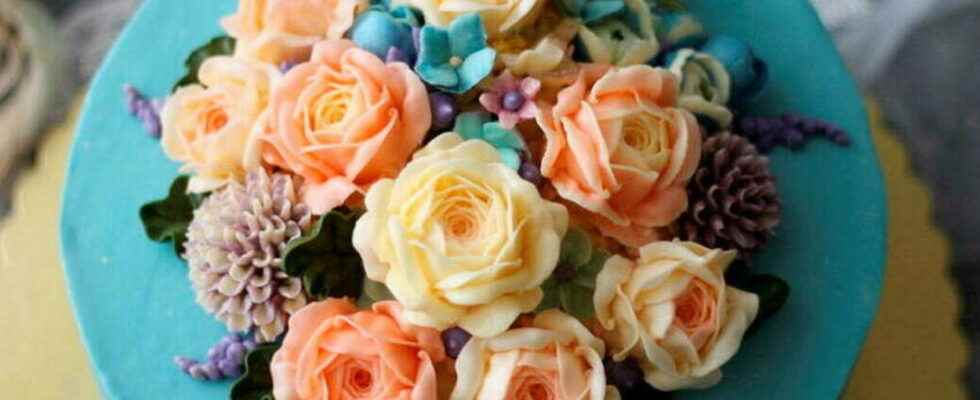ANSES warns of the use of decorative powders to give cakes a metallic tint. Three cases of inhalation have been reported.
By Johanna Amselem
© SADIK ABDULLAH FIDAN / ANADOLU AGENCY / Anadolu Agency via AFP
Published on
Dolorful cakes, creations bearing the effigy of Disney heroes, animals larger than life, the trend is for “cake design”. These artistic pastries have invaded social networks and the windows of many brands. To obtain this metallic visual result, pastry chefs use several products, including decorative powders in gold, silver or copper hues. A use that would not be without risk, warns the National Agency for Food, Environmental and Occupational Health Safety (Anses).
In 2021, the poison control centers alerted to three cases of accidental inhalation of the same decorative powder reference. “Sold in the form of gold, silver or copper powder, these metallic dyes must be diluted and then applied using a brush or a spray gun, specifies the agency. However, these metal powders are not devoid of toxicity”, warns ANSES.
READ ALSOCakes, crisps… These ultra-processed foods that promote dementia
Cough and fever
In detail, the patients breathed in a large amount of gold metallic powder while baking a cake. “They quickly presented with cough, difficulty breathing and short-lived fever with a favorable evolution”, lists ANSES. Before continuing: “The third case involves a healthy child under the age of three who inhaled gold metallic powder poured into a glass by his mother. He also presented rapidly with cough, polypnea and fever. This child carried out biological analyzes at the hospital which revealed an evolving inflammatory syndrome.
The poison control center obtained a detail of the composition of the powders, they were composed of 70% copper and 30% zinc, all in the form of fine particles that can quickly enter the lungs.
READ ALSOWhen your mirror reveals what you eat!
The vagueness around the labeling
ANSES points to the “non-toxic” character written on the label of the decorative powder because the product is edible. Yet these cases prove the existence of possible adverse effects. In addition, the Health Agency points to the vagueness maintained between several decorative powders currently on sale. While some are edible, others are not, but it is not always easy to tell the difference due to unclear labeling and almost similar packaging.
So caution is advised when handling these powders. For safe use, ANSES recommends checking whether or not these decorative powders are edible before any purchase or use. In addition, it is important to use these very volatile powders in a sufficiently ventilated room. To avoid any accident, these powders must be kept out of the reach of children.
